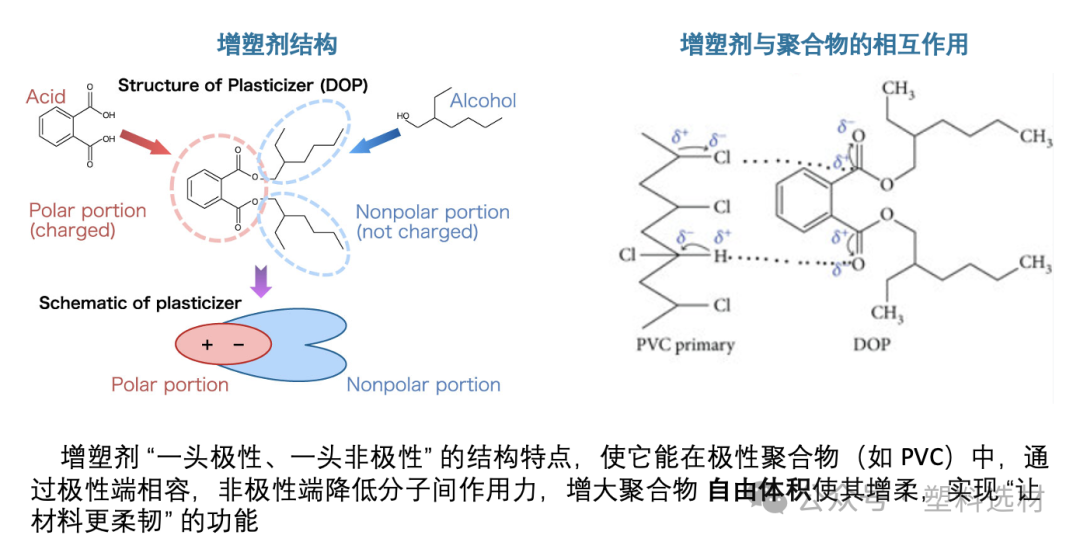From Familiar Plasticizers to Unveiling the Mysterious Polymer Free Volume
When selecting materials or developing flexible plastic formulations, engineers often encounter a mysterious yet crucial component: the plasticizer. It is often defined as an "additive that imparts flexibility to plastics," but how do plasticizers work? Why does the plastic become softer and more pliable after they are added, and why does the glass transition temperature (Tg) even decrease? All of this can actually be explained by an important concept in polymer physics: free volume.
What is "free volume"? Explain with an example from daily life.

Imagine you stack a pile of mahjong tiles tightly together, with almost no gaps between them. This is like the tight arrangement of rigid plastic chains. Once you sprinkle some small balls (like marbles) in between, the mahjong tiles get "pried open" and gain some room to move. These small balls are like plasticizer molecules. They insert themselves between the polymer chains, increasing the movable space between the chain segments, which is referred to as the "free volume."
In terms of physical meaning, free volume refers to the space in polymer materials that is available for segment movement after excluding the space occupied by polymer chains. The larger the free volume, the easier it is for the segments to move, and the softer and more easily deformable the material becomes.
Plasticizers increase free volume how?
The essence of the plasticizing effect of plasticizers is:
By introducing foreign molecules with low molecular weight and low Tg, these molecules insert themselves between polymer chains, disrupting the original interchain interactions and increasing the free volume of the material. This results in a decrease in the glass transition temperature, making the material soft and usable at room temperature.
Specifically, the way plasticizers increase free volume includes the following four steps, with the first three steps being indispensable (the core of the mechanism):
1. Reduce the attraction between chain segments - decrease interchain hydrogen bonds or van der Waals forces.Dipole-dipole interaction;
2. Physical separation of chain segments - Plasticizer molecules insert themselves, acting as "separators."
3. Enhance molecular mobility — especially increasing the freedom of the main chain, side chain ends, and other such parts.
4. Prevent recrystallization or aggregation — Keeping the chain segments in a disordered state helps to enhance the flexibility of the material.
Misconception: Many people mistakenly believe that BDP (a liquid flame retardant for flame-retardant PC/ABS) is a "plasticizer" and should make the material softer. However, in practical applications, BDP often increases the rigidity (modulus) of PC/ABS, and even makes it more brittle and prone to cracking.
The fundamental reason:BDP has high structural rigidity and strong polarity, and is highly compatible with PC/ABS.
BDP is a bisphenol A-based phosphate ester containing two bulky rigid aromatic rings.
It has the same origin structure as PC (polycarbonate) itself (also derived from bisphenol A).
At the molecular level, there are strong polar interactions between PC molecules (such as π–π stacking, hydrogen bonds, etc.).
The result is: Unlike traditional plasticizers, the BDP molecule does not increase the free volume, but may instead reduce segmental mobility.
Further: Why are some plasticizers "good" and others "bad"?
Although in theory many organic small molecules can be incorporated into polymers, to become a high-quality plasticizer, the following requirements must also be met:
Good compatibility with polymers (similar solubility parameter δ).
Molecular structure provides low glass transition temperature.
Appropriate polarity to facilitate interaction with polar polymers (such as PVC);
Low volatility to reduce migration and fogging.
Stable and reversible within the applicable temperature range.
This explains why phthalates (such as DOP, DINP) and fatty acid esters (such as DOA, DINA) are widely used in flexible PVC, while other low-polarity molecules have difficulty achieving similar effects.

Too much plasticizer makes it harder instead?—The "anti-plasticization" phenomenon
Interestingly, when the amount of plasticizer is very low, it may actually make the material harder! This is known as the phenomenon of "antiplasticization."
The reason is that a small amount of plasticizer molecules preferentially bind with the polymer, causing the chain segments to arrange more regularly and the crystallinity to increase, leading to a harder material. Only when the amount of plasticizer added exceeds a certain threshold does the free volume significantly increase, beginning to exhibit "true plasticizing" behavior.
Conclusion: Free Volume - The Scientific Underpinnings of Choosing the Right Plasticizer
Understanding the concept of "free volume" can help engineers scientifically select plasticizers from the structure-performance relationship to optimize the flexibility, processability, and final performance of polymers. In the context of increasingly stringent environmental regulations and the vigorous development of new non-toxic plasticizers, this concept deserves more attention.
In the future, materials research and development is not just about the accumulation of formula experience, but also the precise manipulation of structural control. Plasticizers are not merely small molecules that "make plastics a bit softer"; they are actually a key that unlocks the door to the "free movement" space between molecules.
【Copyright and Disclaimer】The above information is collected and organized by PlastMatch. The copyright belongs to the original author. This article is reprinted for the purpose of providing more information, and it does not imply that PlastMatch endorses the views expressed in the article or guarantees its accuracy. If there are any errors in the source attribution or if your legitimate rights have been infringed, please contact us, and we will promptly correct or remove the content. If other media, websites, or individuals use the aforementioned content, they must clearly indicate the original source and origin of the work and assume legal responsibility on their own.
Most Popular
-

List Released! Mexico Announces 50% Tariff On 1,371 China Product Categories
-

Nissan Cuts Production of New Leaf EV in Half Due to Battery Shortage
-

New Breakthrough in Domestic Adiponitrile! Observing the Rise of China's Nylon Industry Chain from Tianchen Qixiang's Production
-

Dow, Wanhua, Huntsman Intensively Raise Prices! Who Controls the Global MDI Prices?
-

Mexico officially imposes tariffs on 1,400 chinese products, with rates up to 50%






